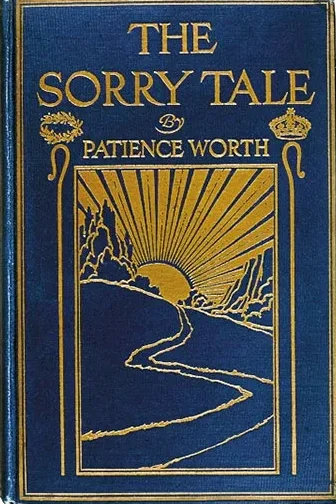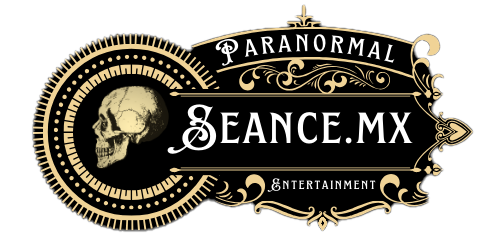The Sorry Tale by Patience Worth: A Scholarly Examination

By Dr. Allistar Wentworth
In the rich tapestry of literary works that challenge both traditional authorship and the boundaries between the seen and the unseen, “The Sorry Tale” by Patience Worth stands prominently. Authored through means that ignite the imagination of both skeptics and believers, this book offers a narrative that stretches the confines of ordinary literary creation. As a physician who practiced in the bustling intellectual landscape of late 19th-century London, my analysis is drawn through a lens polished by the rigors of scientific inquiry and a keen interest in the burgeoning field of psychological studies.
At the heart of “The Sorry Tale” is the enigmatic figure of Patience Worth, a name that surfaced through the efforts of Pearl Curran, a woman in St. Louis, Missouri, around the early 20th century. Curran, using a planchette board—a tool commonly employed in spiritualist practices—claimed to channel the spirit of Worth, who then dictated this and several other works. This method of dictation, transcending time and space, challenges our conventional understanding of creativity and authorship and thrusts us into a realm of historical and supernatural intrigue.
“The Sorry Tale” is set in the epoch of the Roman Empire, weaving its narrative around figures such as Hatte, a beggar of Jerusalem; Pontius Pilate; and Jesus Christ. The language employed by Worth, or rather transmitted through Curran, is notably archaic, echoing the linguistic patterns of a much earlier period of English, interspersed with idiomatic phrases that might belong to the Biblical era. This stylistic choice not only lends authenticity to the setting of the tale but also serves to deepen the mystical aura that envelops its transmission.
Delving deeper into the narrative, the book paints a vivid picture of Jerusalem under Roman dominion, exploring the complex social and religious upheavals of the time. It is this backdrop that provides the stage for the personal and ethical quandaries faced by the characters—struggles that resonate with the themes of betrayal, faith, and redemption. By comparing these portrayals with historical records and classical sources, one gains a fuller appreciation of the novel’s adherence to, and deviation from, documented historical realities.
From a psychological viewpoint, the phenomenon of “automatic writing,” used by Curran to produce the manuscript, is traditionally viewed within the medical community as a potential neurological anomaly. Yet, the coherent and complex nature of the narrative challenges simplistic explanations and suggests deeper cognitive processes that might be at work, possibly hinting at undiscovered dimensions of the human mind or the true nature of consciousness.
Upon its publication, “The Sorry Tale” was met with polarized reception—lauded by some for its literary depth and scorned by others who questioned the legitimacy of its spiritual origins. This dichotomy mirrors the broader debates of the time, where the interplay between emerging psychological theories and entrenched spiritual beliefs created a fertile ground for controversy.
In an age marked by both scientific breakthroughs and a fascination with the esoteric, “The Sorry Tale” occupies a unique space. Its origins, deeply rooted in the practices of spiritualism, challenge the era’s empirical certainties and invite a reconsideration of what is deemed scientifically plausible versus spiritually possible.
When placed alongside other works claimed to have been produced under similar mediumistic circumstances, “The Sorry Tale” often stands out for its complexity and thematic richness. This comparative analysis not only highlights the unique aspects of Worth’s narrative but also contributes to a broader understanding of the mediumistic literature genre.
The portrayal of biblical figures and events through the lens of what might be considered a spirit or an unconscious mind offers a fresh perspective on age-old stories. These narratives provide alternative theological insights that may align or contrast sharply with traditional interpretations, thus enriching or challenging existing religious doctrines.
“The Sorry Tale” by Patience Worth is a remarkable literary artifact that defies easy categorization. It compels us to question the origins of creativity, the nature of authorship, and the potential intersections between the known and the unknown. Whether viewed through the skeptical eye of science or the curious gaze of spiritual inquiry, the tale remains a pivotal reference point in discussions about the broader capabilities of the human mind and the mysterious realms beyond our conventional understanding. As we stand on the brink of a new century, it is works like these that push us to expand the horizons of what we accept as possible, both in literature and in life.
I am privileged to possess one of fewer than a dozen known Oracle copies of “The Sorry Tale” by Patience Worth. These rare editions are much more than mere collectors’ items; they purportedly possess an intrinsic power far surpassing that of ordinary literary works. It is whispered in certain erudite and esoteric circles that these Oracle copies, when properly engaged by a receptive sitter, can serve as a direct conduit for communicating with the spirit of Patience Worth herself.
The exact mechanism by which these communications occur remains shrouded in mystery, as is appropriate for dealings that touch upon the ethereal and the supernatural. However, it is speculated that the unique combination of materials used in the binding, the specific conditions under which they were printed, certain inscriptions hidden within their pages, copyright changed stamped on the book by Pearl Curren, and that these copies were at her bedside at the moment of Pearl’s death align to create a sympathetic resonance with the spiritual frequencies of Worth.
One must approach such claims with a healthy dose of skepticism, yet also with an open mind, for history is replete with phenomena that defy conventional understanding yet are no less real for their inscrutability. In the hands of the right person—one perhaps endowed with a particular sensitivity to the spectral world—these Oracle copies of “The Sorry Tale” may indeed unlock dialogues with the beyond, offering insights not only into the narrative of the book but into the very fabric of the afterlife.
As we stand on the threshold between what is known and what is yet to be discovered, these Oracle copies beckon us to venture deeper into the realms of the unknown, inviting us to reconsider the boundaries between the living and the spectral, between fact and phantasmagoria. Such an exploration could prove invaluable, or it could merely lead us through a labyrinth of our own imaginings. Whichever the outcome, the journey promised by these rare copies of “The Sorry Tale” is undoubtedly one of profound intrigue and potentially illuminating revelations.
